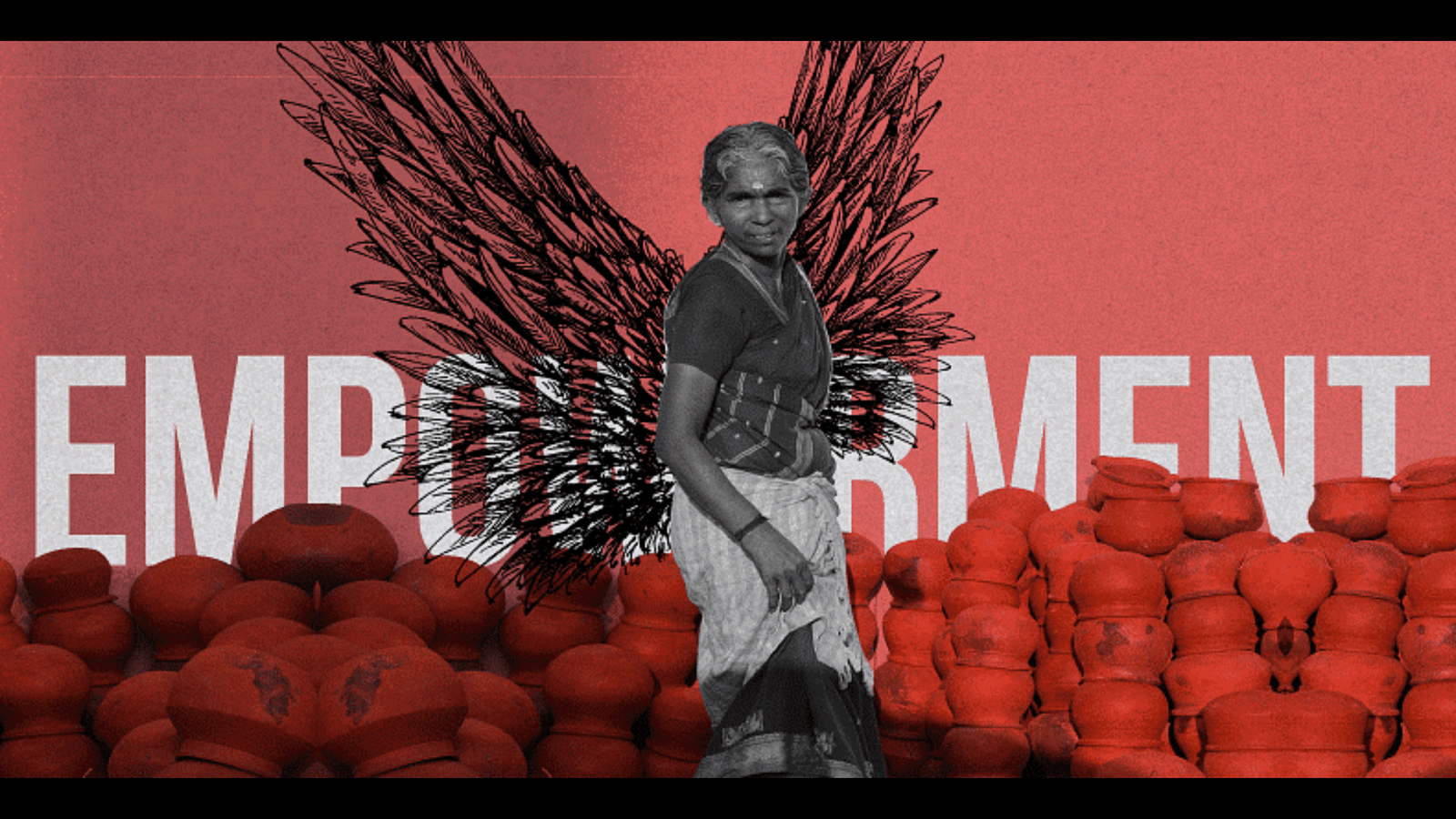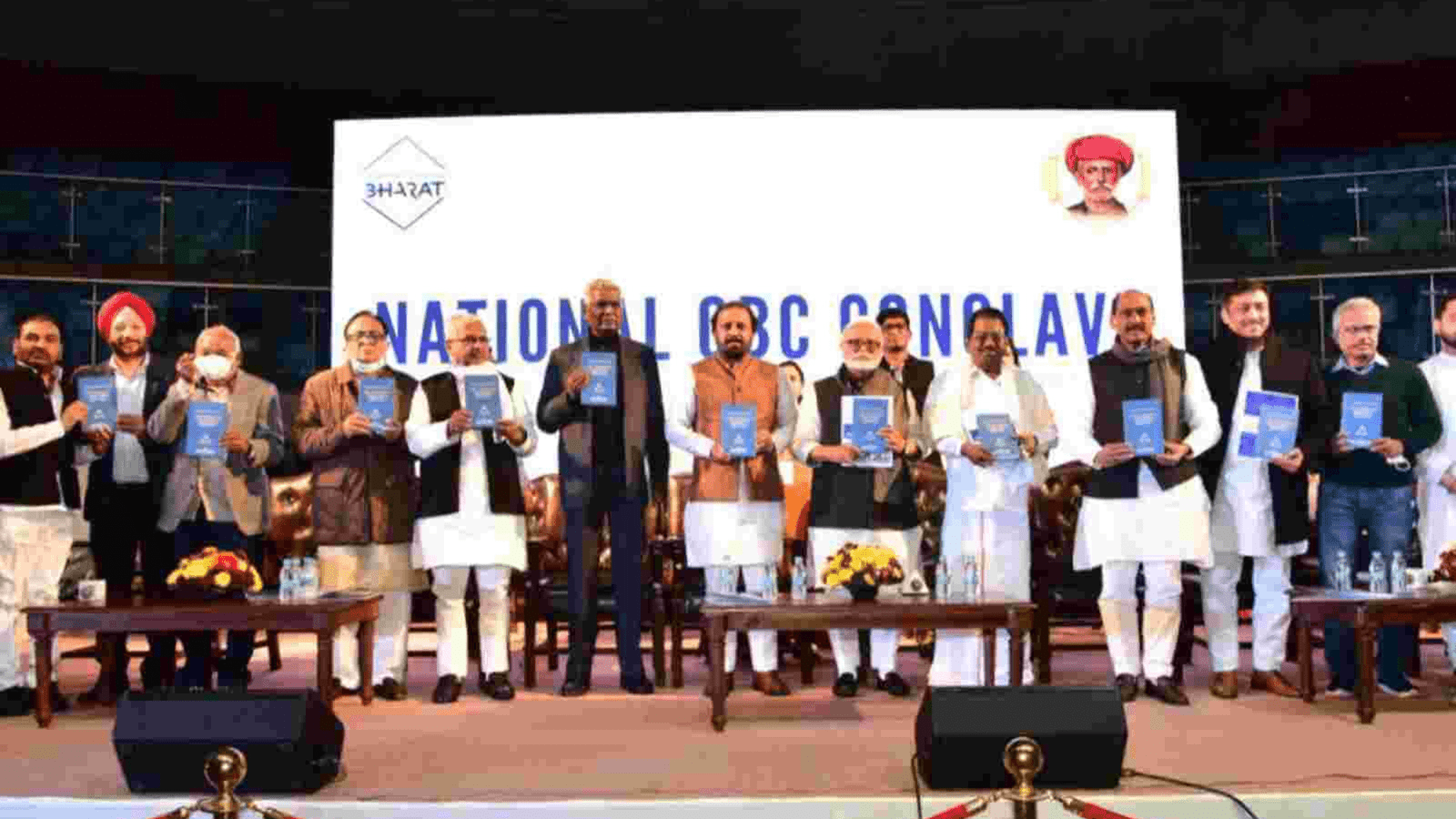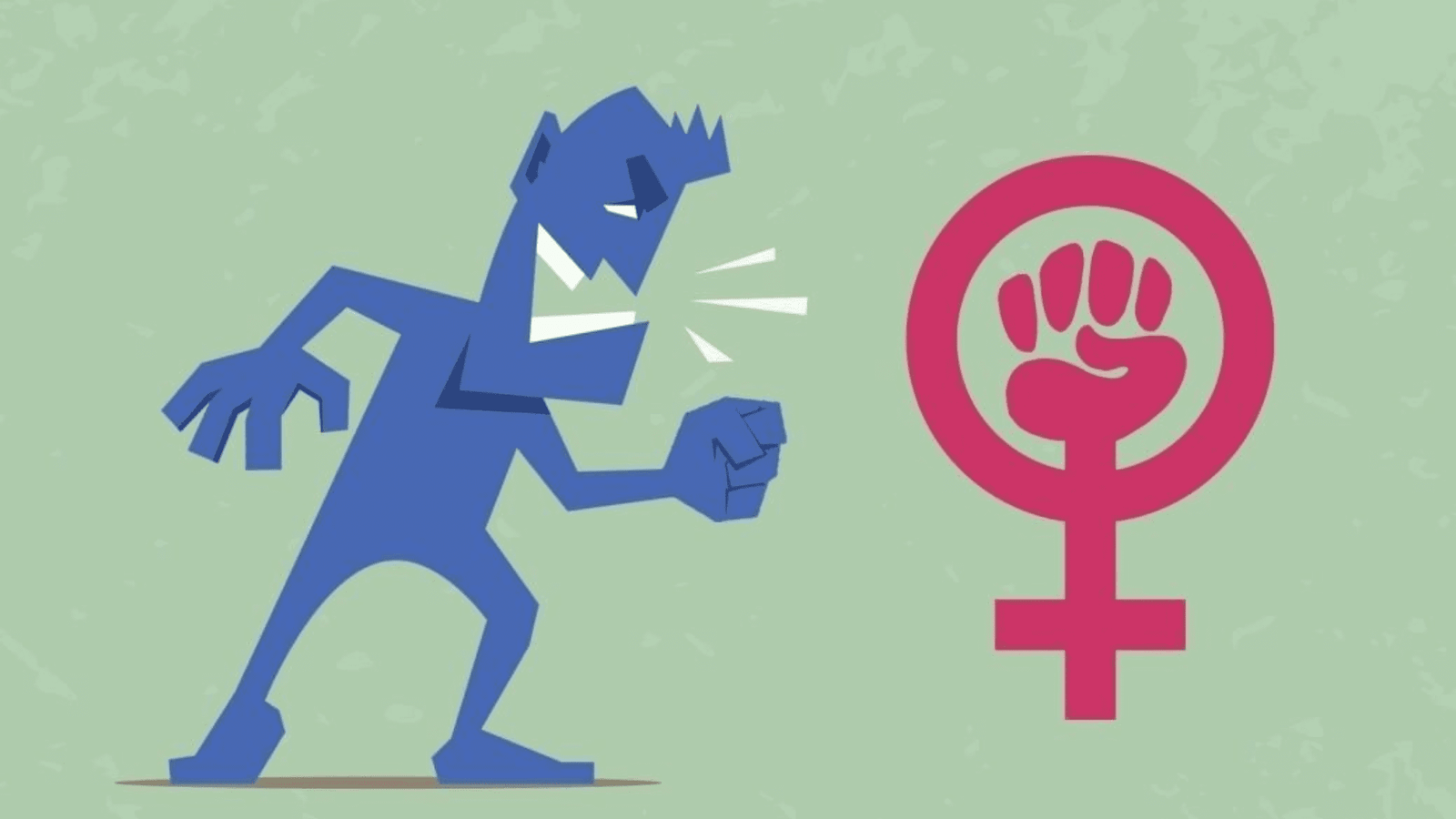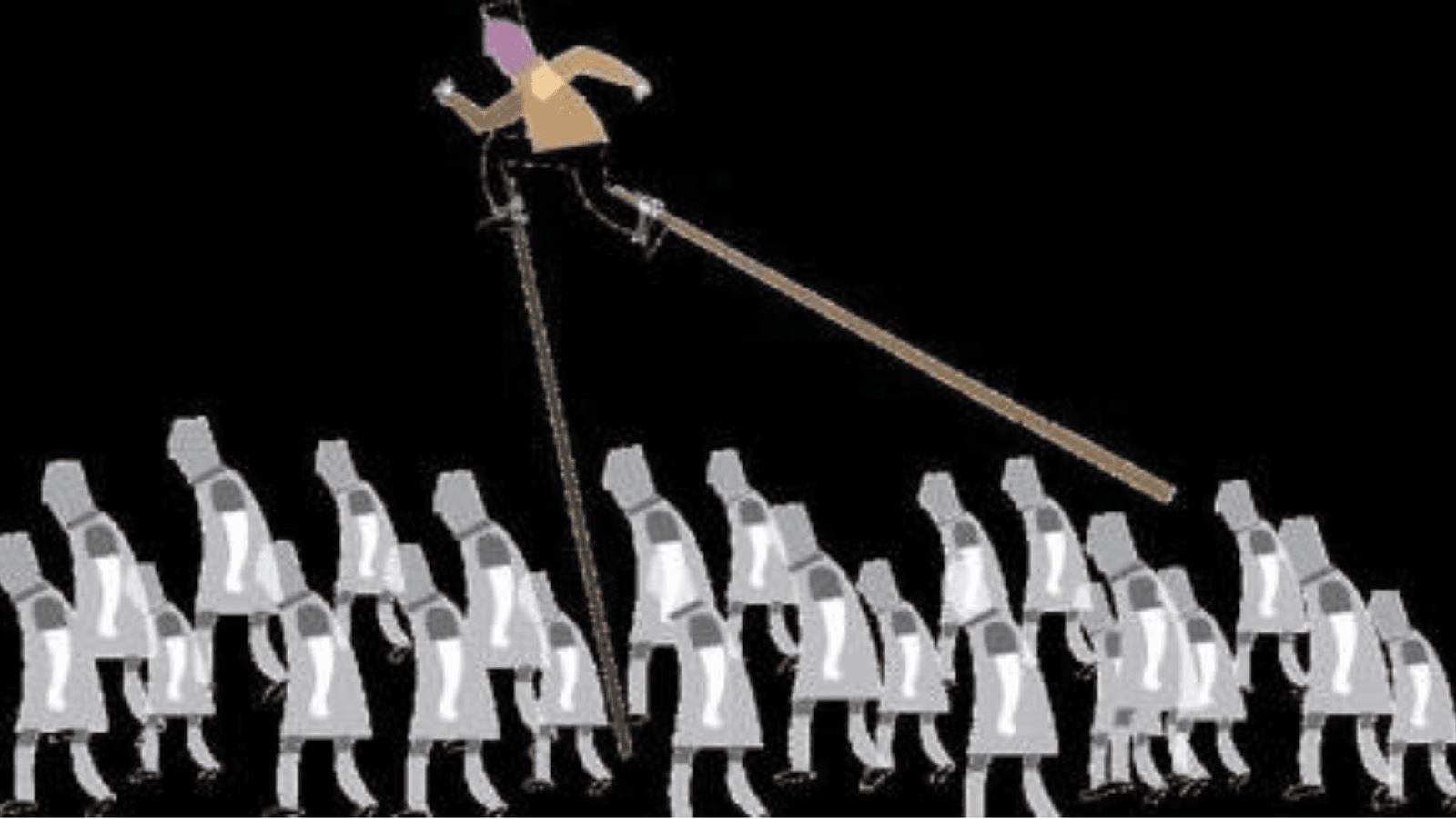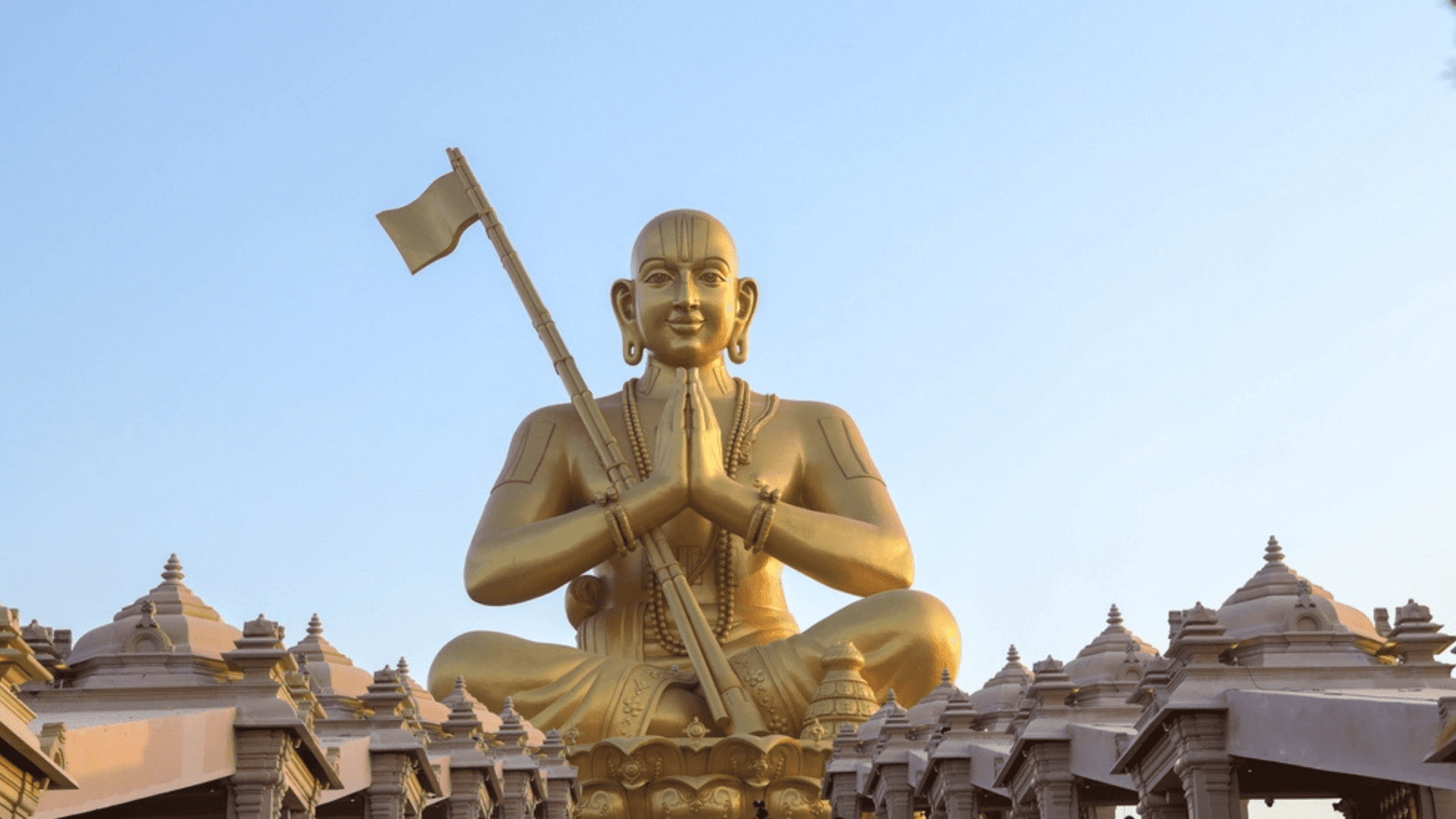
The name given to the statue is meant to mislead the Shudra/Dalit/Adivasis, who have their own spiritual symbols in Telangana and also have major spiritual icons like Mahatma Phule, Savitribai Phule& Dr. B.R. Ambedkar.
Earlier this month, a 216-foot high statue of Ramanujacharya – founder of the Vishishta Advaita school of Vaishnavism in 11 century South India – was unveiled by Prime Minister Narendra Modi. The statue is named ‘Statue of Equality’, resumably on the lines of the Statue of Liberty in New York. Modi said Ramanuja’s Statue of Equality and Sardar Vallabh Bhai Patel’s Statue of Unity will change India.
The main institutionaliser of the latest statue is Chinna Jeeyar Swamy, said to be the guru of Telangana chief minister K. Chandrasekhara Rao. Jeeyar Swamy’s background is not mentioned anywhere but he is from East Godavari district of Andhra Pradesh. Indications are that he himself comes from a Brahmin family background.
Though Ramanuja established his sect of Vaishnavism with the idea of human equality about 1000 years ago, the impact of this drive for equality ought to have been visible in present day Tamil Nadu and Kerala – the region he taught his philosophy and lived his long life. Especially since we know there was no elite or violent counter-reaction of the kind which Buddhism faced. Ramanuja’s main preaching happened around the Srirangam Ranganatha temple in Tamil Nadu. For about 900 years after his death, by the time Periyar, Ramasamy Naikar, Sri Ayyankali and Srinarayana Guru started their struggles for equality in the same region, the Tamil and Kerala Dalits and Shudras experienced little socio-spiritual equality. If anything, their condition was worse than any other part of the country.
If the Vaishnavite Ramanuja opposed the Shaiva casteist tradition of Adi-Shankara and started a movement for equality, what does the caste-cultural history of that region tell us? Chinna Jeeyar Swamy claims and the prime minister of India affirms, that a great spiritual movement of equality was launched, but then why was untouchability in those areas even more widespread than the rest of India – with even some of the Shudra castes like the Nadars of Tamil Nadu and Ezahvas of Kerala too being treated as untouchable and unseeable? This was only region where the Shudras were treated as untouchable till the early 20th century.
For those looking to build statues, there is no shortage of true icons of equality. Ayyankali (1863-1941), who was a Dalit himself, started a movement for allowing Dalits of that region to be allowed to walk in the village streets. Narayana Guru (1856-1928), who came from a toddy tapper community, started a movement to fight for the Shudra ‘Right to Religion’ by establishing his Linga and finally established a mutt of his own. Periyar Ramasamy (1879-1973) a Shudra agri-businessman, finally delivered a major blow to the forces of inequality in the region. Where was the influence of Ramanuja’s equality in all this? If the ‘equality’ claims being made today were true even in the spiritual domain, why were Dalits not even allowed to walk on the roads where Vaishnava temples like the Padmanabha temple of Kerala stood?
It is a known fact that Ramanuja was by birth a Brahmin and never left the Brahminic socio-spiritual practices within temple and outside. He was the opposite of Basaveswara, a Brahmin by birth who rebelled against Brahmanism to establish a spiritual system of human equality in Karnataka.
AdiShankara started his Shaivite movement in the 8th century CE in the context of the inroads Buddhism, Islam and Christianity had made. But that did not stop the growth of these religions. The Brahmins of that region thought that promoting Vaishnavism would stop religious migrations as the Ramayana and Mahabharata were more usable mythological texts. In the absence of any concrete Shaivite mythological text, they promoted Vaishnavism. Both the Ramayana and Mahabharata were composed around Vishnu’s avatar narratives. Ramanuja in that situation worked to promote the Vaishnava cult with vague talk of human equality – in the hope that it would stop the Shudra/Dalit migration to other religions. But the rigidity of Brahminism did not allow any change and untouchability and Shudra inequality were rampant till reformers like Narayana Guru, Ayyankali and Periyar emerged.
The philosophical discourse of Ramanuja did not raise the issue of dignity of labour and respect to production in the Vaishnava system as well. After all, caste inequalities and human untouchability were rooted in productive occupational discrimination. He tried to re-define Brahmanism without differentiating between Brahma the God and Brahmin the human, with a new form of worship but it had nothing to do with equality.
Why then have ChinnaJeeyar, KCR and Rameshwar Rao (the richest Velama real estate business man) planned to establish a Rs 1200 crore spiritual centre with a huge statue in Hyderabad? Does Jeeyar himself believe in human and cultural equality?
Since KCR comes from a Velama landlord family, which also thinks that the Velamas have Kshatriya heritage, they started promoting the Vaishnava sect of Hinduism in Telangana. However, the relationship between JeeyarSwamy and the RSS/BJP is well established. The financial supporter of this project is JupallyRameshwar Rao, a billionaire, and real estate monopolist of Telangana. Since there is no political support to Ramanuja’s ideology in Tamil Nadu and Kerala, they chose Telangana but the ‘Statue of Equality’ name is meant to mislead the Shudra/Dalit/Adivasis, who have their own spiritual symbols in Telangana and also have major spiritual icons like Mahatma Phule, Savitribai Phule and Dr. B.R. Ambedkar.
Modi’s assertion that Ambedkar was a follower of Ramanuja is totally misleading. He was never a follower of Ramanuja.
What KCR also did not understand is that Chinna Jeeyar is an RSS supporter. If he is really opposed to the RSS/BJP he would not have supported the whole agenda of Chinna Jeeyar. In 2013, he “presided over inaugural ceremony of the 32nd state conferences of the Akhil Bharatiya Vidyarthi Parishad (ABVP),” the student wing of the RSS, where he said that “the ABVP was guiding the student community and inculcating patriotism among them.”
The country knows what kind of educational values and patriotism the ABVP promotes across Indian universities. In Telangana, the ABVP was born in Osmania University before the Bharatiya Janata Party was formed in the late 1960s. However, not a single serious scholar has emerged from this organisation so far. The situation in the rest of India is not different.
Jeeyar himself does not believe in human and cultural equality. A key component of equality is respect for the food and work culture of different caste-community people.
Jeeyar said in one of his sermons just before the inauguration of the Statue of Equality:
“If you eat pork, you would only think like a pig. If you eat mutton, you would only follow the herd like a goat as your own brain stops working. If you take eggs, you would only behave like a chicken – peck in the dirt, place to place, and eat from it”.
With this statement, Jeevar Swamy insulted the food culture of the majority of Indians. He disrespected the blood in the body of Shudras, Dalits and Adivasis, apart from Christians, Muslims, Sikhs, Lingayats and so on. Even his own follower, KCR, eats meat.
Is this the kind of equality that Ramanuja practiced and taught? Even after a thousand-year-long spiritual and cultural legacy, this kind of human intolerance and inhuman cultural traits survive among followers of Ramanuja whose statue is now called ‘Statue of Equality’.
This means they are coming out with a new meaning for the concept. Equality now means the practice of Varna Dharma, casteism and untouchability.
